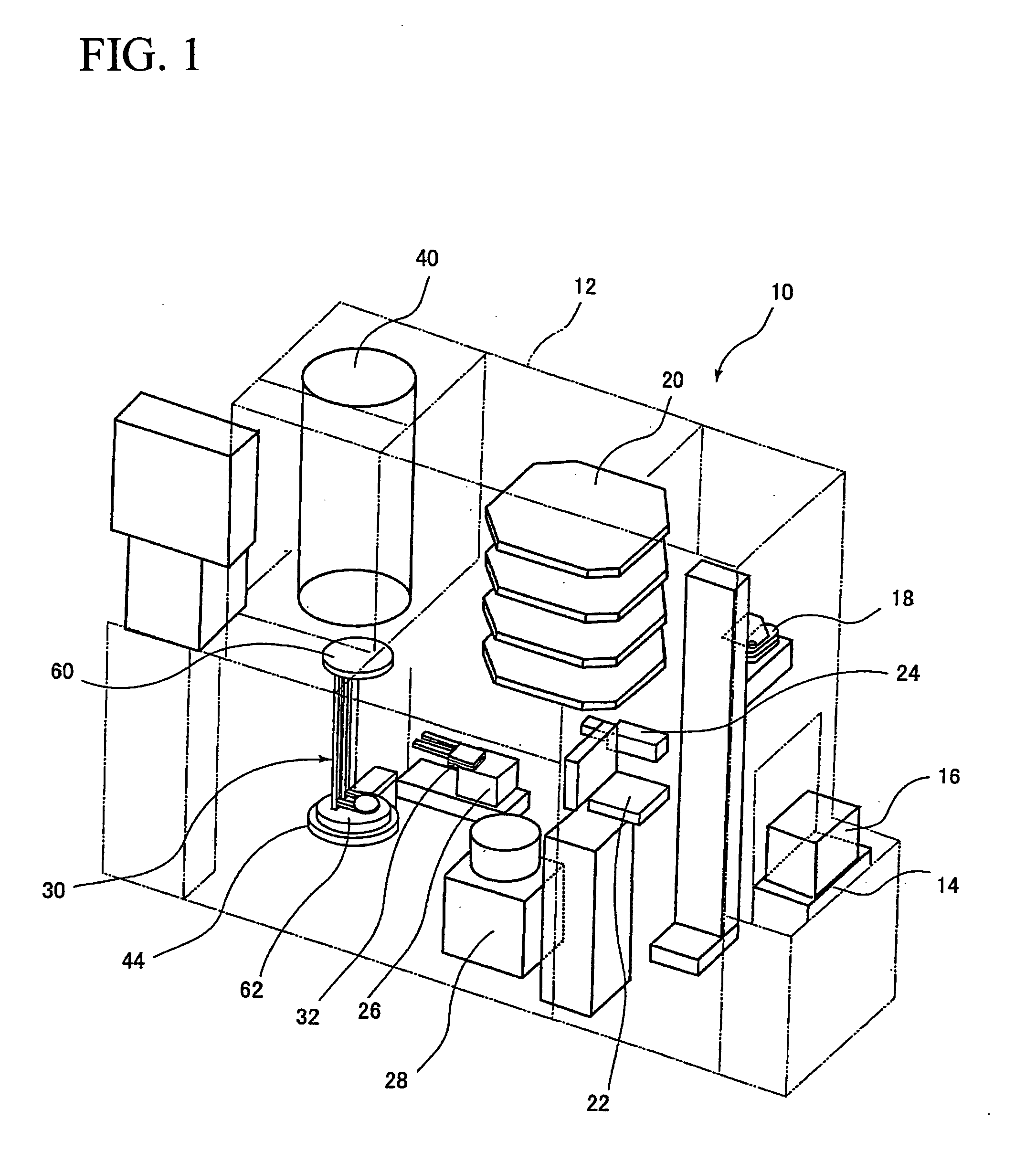Heat Treatment Apparatus
a technology of heat treatment apparatus and heat treatment tube, which is applied in the direction of chemistry apparatus and processes, pressurized chemical processes, pressure vessels for chemical processes, etc., can solve the problems of deteriorating flatness of the substrate, generating slip lines, and difficult to manufacture lsi with a desired pattern, so as to prevent the occurrence of slippage of the substrate caused by differences in thermal expansion coefficients
- Summary
- Abstract
- Description
- Claims
- Application Information
AI Technical Summary
Benefits of technology
Problems solved by technology
Method used
Image
Examples
first embodiment
[0079]FIG. 3 and FIG. 4 show a first embodiment, the supporting tool 30 includes a body portion 56 and supporting plates 58. The body portion 56 is formed of silicon carbide or silicon carbide (SiC) impregnated with silicon (Si), and includes an upper plate 60 (shown in FIG. 1) of a disk-shape, a lower plate 62 (shown in FIG. 1) also of the disk-shape, a plurality of, two for example, pillars 64, 64 for connecting the upper plate 60 and the lower plate 62, and supporting strips 66 that connect the pillars 64, 64. The supporting strips 66 are formed integrally with the pillars 64, 64 so as to connect the two pillars 64, 64, and the supporting strips 66 and the pillars 64, 64 are formed into a skeleton (framework) structure. The supporting strip 66 is formed, for example, into an U-shape from above, and extends in the horizontal direction, and includes a projection 68 which projects toward a tweezers 32 insertion side, descried later (the side of the substrate transfer unit 26). A num...
second embodiment
[0118] Subsequently, FIG. 11 and FIG. 12 show a
[0119] The second embodiment is different from the first embodiment described above in the shapes of the supporting strip 66 and the supporting plate 58. In other words, the supporting strip 66 is formed into an M-shape when viewed from above, extends horizontally, and is provided with the projection 68 projecting in a triangle shape toward a tweezers 32 insertion side (the side of the substrate transfer unit 26). A distal end of the projection 68 is protruded from a straight line that connects the two pillars 64, 64 toward the tweezers. A number of the supporting strips 66 are formed in the vertical direction with respect to the pillars 64 at regular intervals, and the supporting plates 58 are supported by a number of the supporting strips 66 respectively. The supporting plate 58 is formed into a disk-shape and the center of the supporting plate 58 is located on the straight line connecting the two pillars 64, 64. The substrate 72 is s...
third embodiment
[0143] FIGS. 16 to 19 show a
[0144] The third embodiment is different from the first embodiment described above in the shapes of the supporting strip 66 and the supporting plate 58.
[0145] In FIGS. 16 to 19, the supporting tool 30 includes the body portion 56 and the supporting plate 58. The body portion 56 is formed of silicon carbide (SiC) or silicon carbide impregnated with silicon, and includes the upper plate 60 (shown in FIG. 1) of the disk-shape, the lower plate 62 (shown in FIG. 1) also of the disk-shape, three sets of, for example, two pillars 64, 64 for connecting the upper plate 60 and the lower plate 62, and supporting strips 66a, 66b, 66c that extend from the three sets of pillars 64, 64. The three sets of pillars 64, 64 are arranged so as to be apart from each other by 90°, two sets on the tweezers 32 insertion side at positions 180° apart from each other and one set on the opposite side from the tweezers 32 insertion side (the side opposite from the side on which the t...
PUM
 Login to View More
Login to View More Abstract
Description
Claims
Application Information
 Login to View More
Login to View More - R&D
- Intellectual Property
- Life Sciences
- Materials
- Tech Scout
- Unparalleled Data Quality
- Higher Quality Content
- 60% Fewer Hallucinations
Browse by: Latest US Patents, China's latest patents, Technical Efficacy Thesaurus, Application Domain, Technology Topic, Popular Technical Reports.
© 2025 PatSnap. All rights reserved.Legal|Privacy policy|Modern Slavery Act Transparency Statement|Sitemap|About US| Contact US: help@patsnap.com



